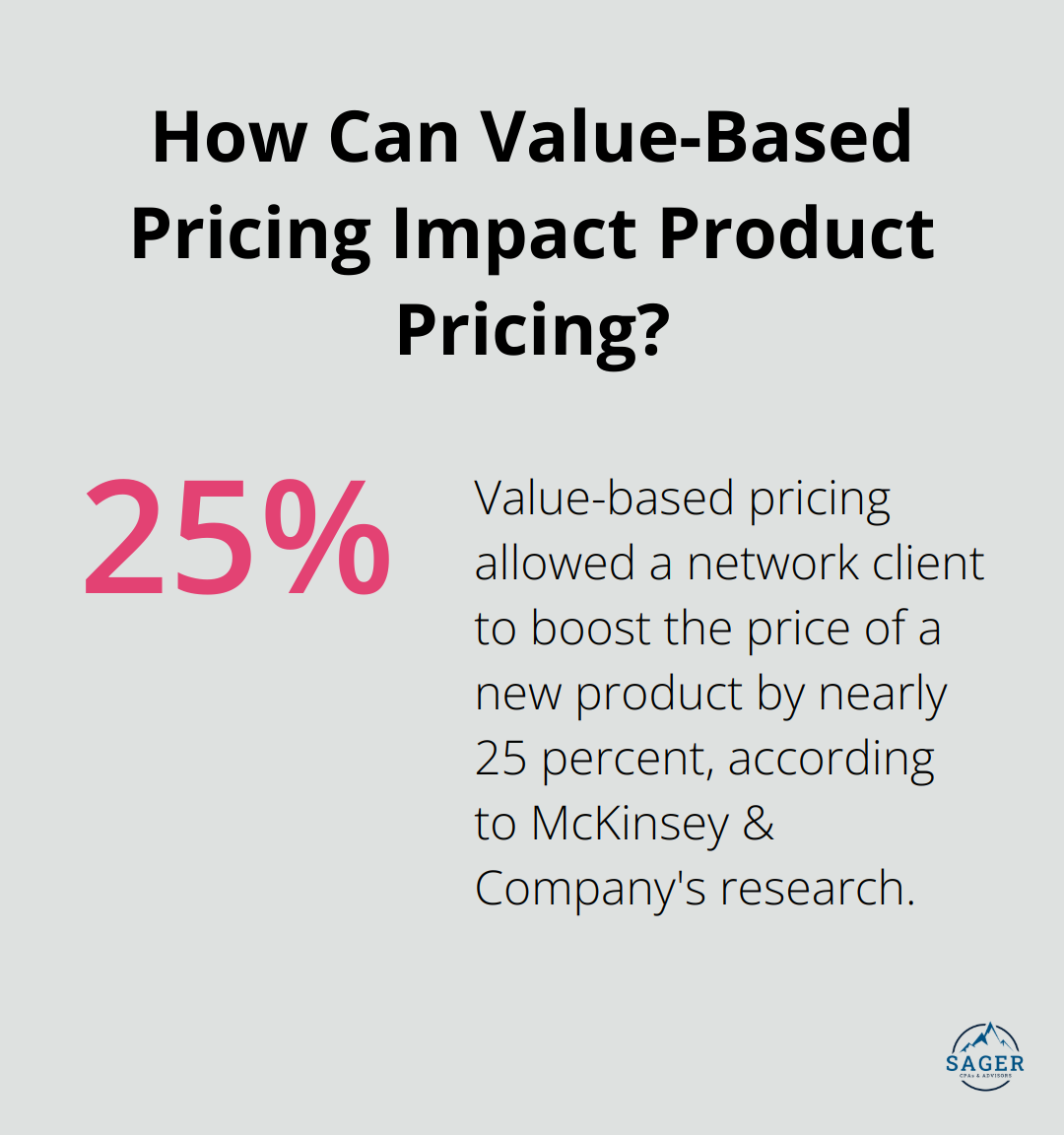
At Sager CPA, we know that implementing successful business financial strategies is key to long-term growth and stability. Many companies struggle to develop and execute effective financial plans, often leading to missed opportunities and unnecessary risks.
This blog post will guide you through the essential steps of creating and implementing robust financial strategies for your business. We’ll cover everything from understanding your current financial position to setting clear goals and developing actionable plans.
A thorough financial audit forms the bedrock of your business strategy. This process involves more than a simple review of your books; it requires a deep examination of your entire financial ecosystem. Start by collecting all relevant financial documents. A comprehensive audit generally includes a balance sheet (showing assets, liabilities and equity), income statement, cash flow statement, and equity statement.

Examine these documents meticulously for accuracy. Look for any inconsistencies, unusual transactions, or areas where the numbers don’t align. This scrutiny often reveals hidden issues or opportunities that you might have previously overlooked.
Cash flow analysis provides insights into the rhythm of your business. Track your cash inflows and outflows over the past 12 to 24 months to identify seasonal trends, unexpected dips, or surprising peaks. Ask yourself:
This analysis allows you to anticipate future cash needs and plan accordingly. For instance, if you consistently experience cash shortages in Q1, you can prepare by accumulating reserves in Q4 or negotiating more favorable payment terms with suppliers.
Every business has unique financial strengths and weaknesses. Recognizing yours is essential for strategic planning.
Start with your strengths. Do you have a particularly profitable product line? Is your overhead lower than industry standards? These areas present opportunities for growth or leverage.
Next, confront your weaknesses directly. Perhaps your accounts receivable turnover is slow, or your debt-to-equity ratio exceeds your comfort level. Acknowledging these issues is the first step toward addressing them.
Compare your financial ratios to industry benchmarks. This comparison provides context for your performance and highlights areas where you excel or lag behind.
Modern financial management tools can streamline your analysis process and provide real-time insights. Cube, an FP&A platform, provides real-time financial and operational data access, enabling strategic planning, reporting, and analysis.
These tools (when used effectively) can save time and improve the accuracy of your financial assessments.
While internal analysis is valuable, an external perspective can offer new insights. Consider engaging with financial advisors or CPAs who specialize in your industry. They can provide:
At Sager CPA, we offer tailored financial analysis services to help businesses gain a clear understanding of their financial starting point. Our expertise can help you uncover hidden opportunities and navigate potential financial pitfalls.
With a comprehensive understanding of your current financial position, you’re ready to set clear financial goals and objectives. This knowledge will serve as the foundation for your strategic financial planning, ensuring that every decision you make is grounded in solid financial reality.
Short-term financial goals typically span 6 to 18 months and address immediate concerns or opportunities. These might include improving cash flow, reducing operational costs, or increasing profit margins on specific product lines. For example, if your cash flow analysis revealed periodic shortages, a short-term goal might be to build a cash reserve equal to three months of operating expenses within the next year.
Long-term financial goals usually extend beyond 18 months and align closely with your overall business vision. These could involve expanding into new markets, developing new product lines, or achieving a certain valuation for your company.
Your financial objectives should directly support your broader business strategy. If your strategy involves market expansion, your financial goals might focus on securing capital for new locations or increasing marketing budgets. Conversely, if your strategy emphasizes operational efficiency, your financial goals might target cost reduction or productivity improvements.
To track progress effectively, break down your financial goals into specific, measurable milestones. Instead of a vague goal like “increase profitability,” set a target such as “increase gross profit margin from 20% to 25% within the next fiscal year.” This specificity allows for clear tracking and accountability.
Financial goals aren’t set in stone. Market conditions, internal changes, and unforeseen challenges can all impact your financial trajectory. Schedule quarterly reviews of your financial goals to ensure they remain relevant and achievable. During these reviews, assess progress, identify obstacles, and make necessary adjustments to your strategies.

Setting effective financial goals is a skill that improves with practice and expert guidance. Many businesses benefit from professional assistance in defining and achieving their financial objectives. A skilled financial advisor can provide accurate projections that will help you establish and then grow your business.
With clear financial targets in place, the next step is to develop and implement effective strategies to achieve these goals. Let’s explore how to create a comprehensive plan that will drive your business towards financial success.
Create a comprehensive budget that reflects your financial goals. This budget should serve as a financial roadmap. Use historical data and future projections to construct a budget that balances realism and ambition. The National Federation of Independent Business reports that businesses have seen a 4.2 percent increase in the past six months, which is the largest such increase since the post-pandemic labor market rebound in 2021.

Your budget should incorporate flexibility. Allocate contingency funds for unexpected expenses or opportunities. Conduct monthly budget reviews and adjustments to maintain alignment with your business realities and goals.
Focus on expanding your most profitable products or services. Implement value-based pricing strategies. McKinsey & Company’s research indicates that value-based pricing allowed a network client to boost the price of a new product by nearly 25 percent.
Harness the power of upselling and cross-selling. Train your sales team to identify additional sales opportunities within your existing customer base. This strategy increases average transaction value without incurring new customer acquisition costs.
Review your expenses thoroughly. Identify areas where you can reduce costs without compromising product or service quality. This may involve supplier contract renegotiations, inventory management optimization, or operational efficiency improvements.
Consider zero-based budgeting for certain departments. This approach requires justification of every expense from scratch, often resulting in significant cost savings.
Invest in financial management software that integrates with your existing systems. Tools such as QuickBooks or Xero automate many financial processes, reducing errors and freeing time for strategic activities.
Explore AI-powered financial forecasting tools. These tools provide more accurate predictions by analyzing vast data amounts and identifying patterns that humans might miss. This technology enables more informed decisions about resource allocation and risk management.
Develop an effective debt management strategy. This may include consolidation of high-interest debts or negotiation of better terms with lenders. Always prioritize high-interest debt repayment, as this significantly reduces overall interest payments over time.
When considering new financing, look beyond traditional bank loans. Explore alternative options such as equipment leasing, invoice factoring, or peer-to-peer lending platforms. These alternatives often provide more flexibility and potentially lower costs than traditional financing methods.
Implementing business financial strategies requires dedication, expertise, and adaptability. Companies must understand their current financial position, set clear goals, and develop comprehensive plans for sustainable growth and profitability. Regular review and adjustment of financial plans prove essential in the ever-changing business landscape.

Professional guidance enhances financial strategies significantly. Financial advisors and CPAs bring specialized knowledge, industry insights, and objective perspectives to the table. At Sager CPA, we offer expert financial management and tax planning services tailored to unique business needs.
Successful business financial strategies create a roadmap for a company’s future. They combine thorough analysis, clear goal-setting, and strategic implementation with professional guidance. This approach positions businesses for long-term success and growth in an increasingly competitive marketplace.




Privacy Policy | Terms and Conditions | Powered by Cajabra
At Sager CPAs & Advisors, we understand that you want a partner and an advocate who will provide you with proactive solutions and ideas.
The problem is you may feel uncertain, overwhelmed, or disorganized about the future of your business or wealth accumulation.
We believe that even the most successful business owners can benefit from professional financial advice and guidance, and everyone deserves to understand their financial situation.
Understanding finances and running a successful business takes time, education, and sometimes the help of professionals. It’s okay not to know everything from the start.
This is why we are passionate about taking time with our clients year round to listen, work through solutions, and provide proactive guidance so that you feel heard, valued, and understood by a team of experts who are invested in your success.
Here’s how we do it:
Schedule a consultation today. And, in the meantime, download our free guide, “5 Conversations You Should Be Having With Your CPA” to understand how tax planning and business strategy both save and make you money.